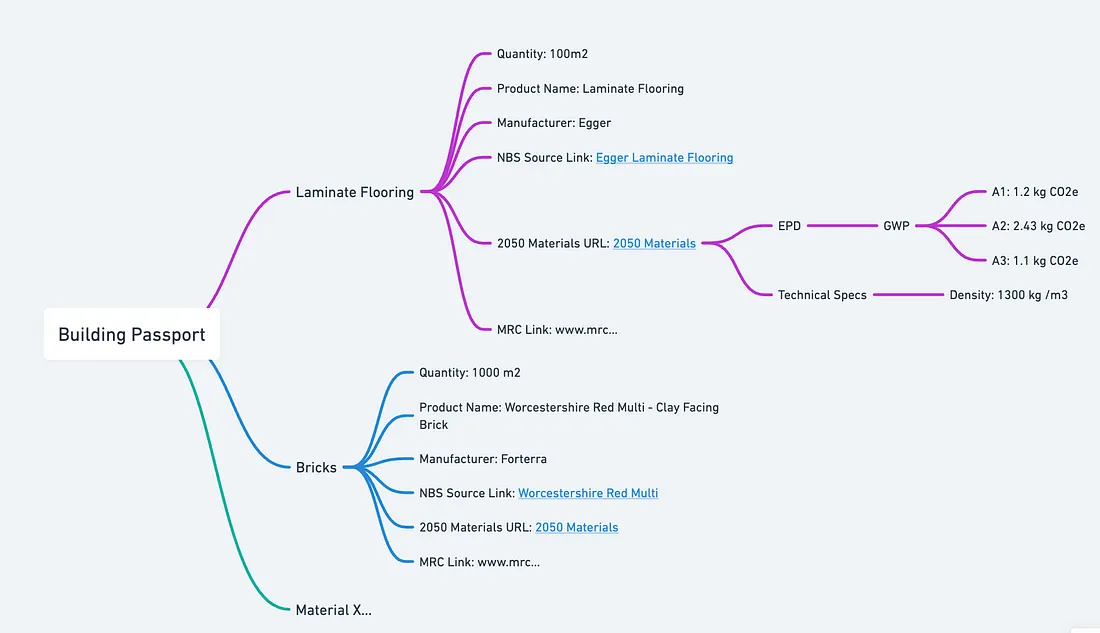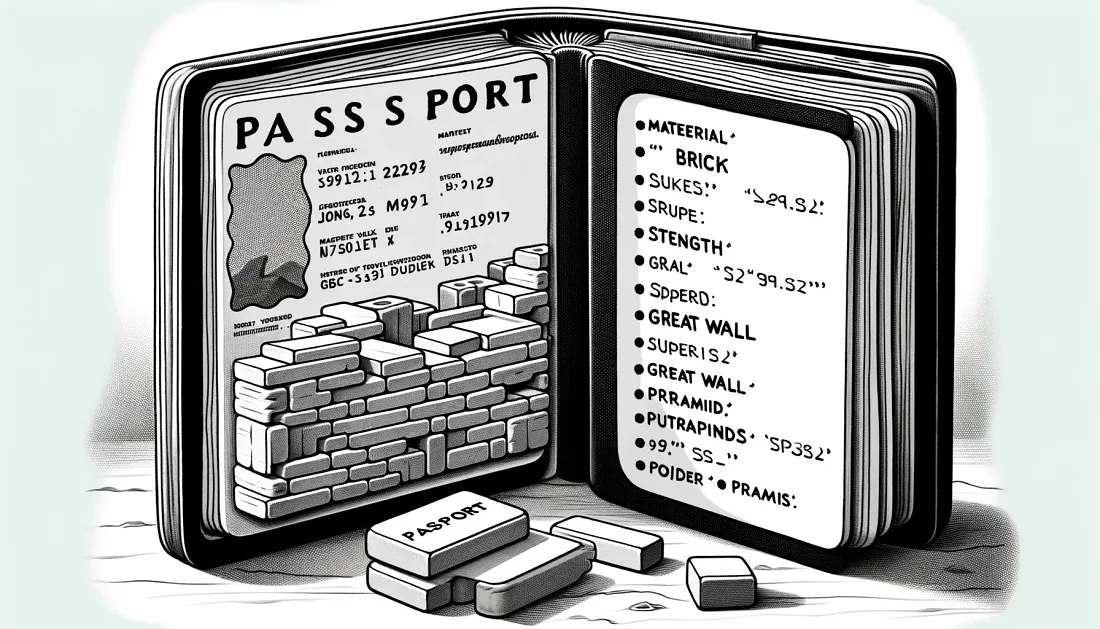The Role of Open APIs in Material Passports
The last couple of weeks we’ve heard a lot of excitement and talk about material passports… So here’s our take on the topic…
Material passports represent a transformative approach to handling construction materials with an eye toward sustainability and circularity. These “passports” are meant to act as a comprehensive database, cataloging materials used in buildings to optimize their reuse and recycling at the end of their life cycle. The goal is to treat buildings as “material banks,” where components can be reclaimed and repurposed, rather than demolished and wasted.
The data that should be included in a material passport is still debated in the industry.
Generally people agree that it would encompass the material’s identity, physical and chemical information, method of fixing, date and place of manufacture, installed date, maintenance history, and performance and aesthetic grades.
This information reduces risk, increases the lifespan of materials, and adds value, making it easier to handle materials responsibly over the lifecycle of a building, and (importantly) to be reused at the end of their (first) life.
Additionally, it’s commonly accepted that the environmental impact of the materials should be tracked alongside their performance data. Datapoints like GWP (kg CO2e), Freshwater Use (liters), Ozone Depletion Potential, etc. are commonly cited as the metrics to include in material passports. This information is hard to obtain, unless you tap into large material databases like the one we offer at 2050 Materials.

An example of what a material passport might look like (Source: 2050 Materials)
To leverage open APIs in creating data frameworks for material passports, a multi-faceted approach is necessary:
- Automated Data Collection: Deploy algorithms to gather comprehensive data on building materials, from origin to potential end-of-life pathways.
- Integration with BIM: Connect material databases to Building Information Modeling (BIM) systems, allowing for real-time updates and access during the design process.
- Open API Connectivity: Utilize open APIs to integrate with other systems, such as facility management software, enabling a continuous flow of information throughout the building’s life cycle.
- User Interface for Accessibility: Develop a user-friendly interface that can easily be used by architects, designers, and construction professionals to access and update the passport data.
- QR and RFID for Physical Tracking: Implement QR codes and RFID tags on physical materials for easy identification and retrieval of digital information.
By focusing on these aspects, the industry can create an accessible and dynamic system that not only aids in the current project management but also paves the way for future reuse of materials. The API-first approach can facilitate seamless integration with existing tools and software used in the design and construction industry.

The implementation of material passports requires cooperation from all stakeholders in the construction process. From architects and engineers to contractors and facility managers, each has a role in maintaining the integrity of the data and utilizing it for material conservation and waste reduction.
The role of Open APIs in Material Passports
Open APIs play a crucial role in the functioning and success of material passports in the built environment. By enabling diverse applications to communicate with each other, open APIs can support the seamless exchange of information between stakeholders and software systems, crucial for managing material passports.
The material passport acts as a repository of data for each material used in construction, capturing its lifecycle from production to potential reuse. Open APIs facilitate the updating and sharing of this information across various platforms in real time. Here’s how:
- Data Exchange: Open APIs allow for the easy exchange of data between different systems. For instance, details about a material’s performance, maintenance history, and end-of-life options can be shared between the material passport database and BIM tools or facility management software.
- Integration: They ensure that data from material passports can be integrated with other tools and platforms used by architects, engineers, and construction managers, without the need for custom-made interfaces.
- Accessibility: Open APIs make the data in material passports accessible to various users, from sustainability assessors to regulatory bodies, ensuring transparency and compliance with environmental standards.
- Real-Time Updates: As materials are used, maintained, or replaced, the open API can facilitate real-time updates to the material passport, ensuring that the information is always current and accurate.
- Scalability: With open APIs, material passports can easily scale from individual buildings to larger built environment projects, as APIs can handle large amounts of data from multiple sources.
- Interoperability: They provide a standardized way of communication, which is essential for the interoperability of different systems, crucial for the adoption of material passports across the industry.
The future is in JSON…?
The future of material passports lies in the widespread adoption and consistent update of data.

The work we do at 2050 Materials, and the fact that we have an open API approach, it not by chance. With an open, collaborative approach, the construction industry can take a significant step toward a circular economy, reducing waste and promoting sustainability in the built environment.
We encourage everyone to head to our platform, get an API key, and start developing the future!
Related articles

Climate-Resilient Materials for the Built Environment: A Data-Centred Prime
As climate volatility intensifies, resilience metrics are fast becoming as critical as carbon data in material selection. This article outlines why adaptation is now a design imperative, how materials can be evaluated through a systems lens, and what KPIs project teams should demand. From self-healing concrete to fire-rated façades, we present a structured taxonomy of resilient materials, explain how to embed this intelligence into digital design workflows, and propose next steps for specification, benchmarking, and procurement.
Read more
The Most Interesting Low Carbon Products in Office Design
In this article and collection, we highlight 11 outstanding products that contribute to a lower carbon footprint in office design.
Read more
Top Low Carbon Building Boards: Performance, Benefits, and Use Cases
The building boards highlighted in this article and collection showcase low-carbon innovation in modern construction.
Read more